The audience’s behaviour and engagement may shape the perception and understanding of the show. Drawing parallels with ancient theatre and sociology, to highlight the importance of the audience plays in the artistic experience. The discussion extends to Paris Fashion Week, where audience motives vary widely influencing their interaction with the event. Suggesting that the audience plays a crucial role in interpreting and giving meaning to the object, whether in galleries or on the runway.
Mark Rothko and the Audience
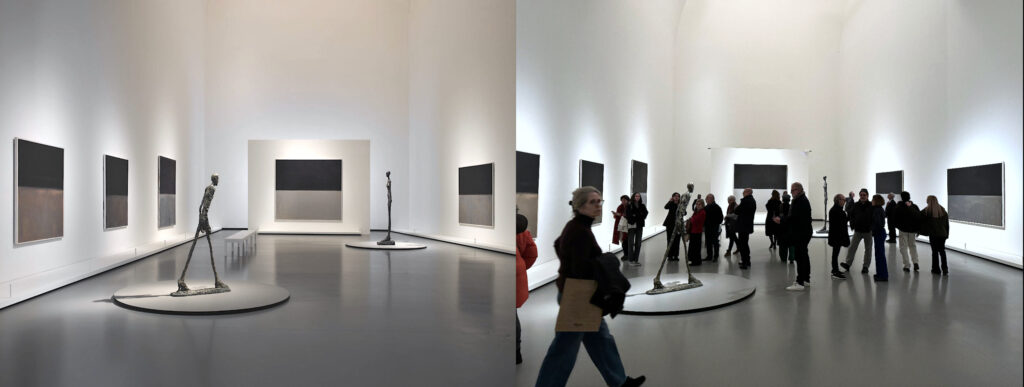
Entering the Foundation Louis Vuitton facilities, intending to see the recent Mark Rothko exhibition, I was overwhelmed with the grand phenomenon the paintings have over people. It’s maybe not the paintings themselves but the consuming notion that Mark Rothoko’s paintings have, or at least the advertising of the exhibition. The colour theory. The colour layering. The colour psychology. The colour association. It was all there.
Nonetheless, the intriguing factor that stood out the most were the people there. The audience. Individuals from all kinds of walks of life, making an effort to see Mark Rothko. The focal point should have been the paintings and the artist, for me it became the audience. An evidence for art becoming the observation of people.
People watching is simply observing strangers in their natural field of mind, or at least their behaviours in front of Mark Rothko. In the anthropologic curiosity, I began to monitor people. How long people are willing to stand in front of the Mark Rothko painting, analyse it, or even read the description? Some prefer not to read the description at all and just get straight to the painting. Some consider the description and swing back and forth between the description and the painting. Of course, some just walk, passing by the paintings, considering their time more than the art itself.
Kids attribute to the curiosity as well. An American family of two kids, one girl, one boy, two parents, one mother, one father. The kids were about the same age, between 7 and 11. While the parents run after those kids. Between the gallery three and five, the girl blurts “What is so amazing about this? This sucks!”
Stunned to speak, I couldn’t believe that someone could or had the right to criticise Mark Rothko, especially in the presence of his painting. It seems almost unholy. At the same time, what if this kid was right? What are we being fed? Do we like it because it is expected of us? Is it the unevident societal pressure that forces us to like it?
There is no definite conclusion in the nosy observation, but one thought of the importance the audience plays in the space introduced.
Who is the Artist?
The definition of an artist has become extremely vague. To the point where anyone and everyone can call themselves an artist. In a vague definition, an artist is an individual who can create or demonstrate a media of art (sculpting, painting, writing, music, architecture, performance, film).
From the subjective point of view, an artist may be a person who processes their cultural, social, religious or political environment, translating it into one or a series of visual object/s. Concluding to the audience is a further processing machine of the translation of the artist. In modern art, the translation can vary, due to the choice it gives to the audience of perception. Modern art in that sense can be named democratic.
The artist has to know their audience, in the manner of the appropriate time period of significance. The artist may choose to get as close as possible to the audience through their creation. Rather to relate or to evoke the audience. The reflection of the artist’s creation is the reflection of the audience and society overall. The art itself is the insight of the society. As soon as the artist begins tailoring his work to the public in pursuit of acceptance and legitimacy, the art expounds into becoming a product of this audience. Does the artist have to serve the audience’s needs?
Who is the Audience?
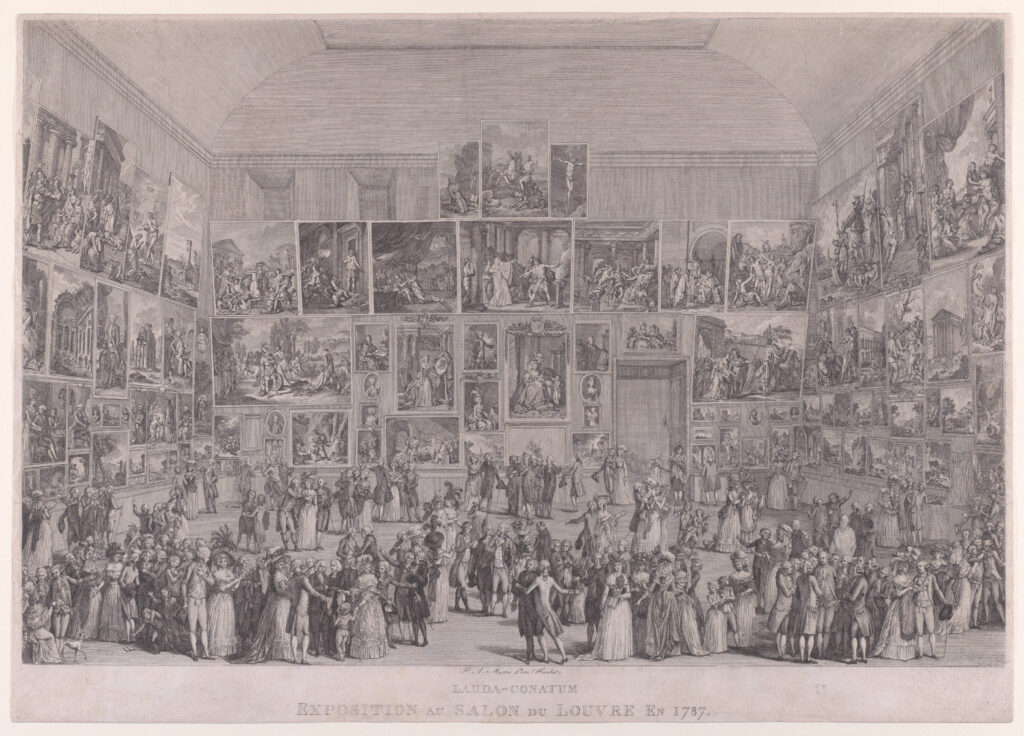
Referencing the Antiquities theatre, Simon Goldhill speaks on the ancient Greek audience, “The theatre was a space in which all the citizens were actors–as the city itself and its leading citizens were put on display.” Goldhill explains the contribution of the audience and how the audience becomes part of the theatre. The speculators are an essential element to any time of show. They enable the display to be named a display. The audience has an initial and external reaction to the art. They are seen as the receivers and the translators of what the creative wants to portray. It can be said if the audience does not understand or acknowledge the work, the creative has failed in storytelling. Particularly in fashion, the product, garment, has to speak for itself.
The spectators show up to participate in the ensemble of courses of action which would be the now traditional act of taking photos outside, inside, and throughout the show. The phones contribute to the facade of activeness, or even through the optical lens through which the garments and the show will be seen. The range of spectators can vary as does their activeness with the show.
A sociologist from the Marxist perspective, Stuart Hall, explores the idea of active and passive audiences. Active audiences are those who question any aspect of the messages behind an object. Passive audiences are those who unconsciously absorb the messages without question. Hall’s theory suggests that audiences are active rather than passive, as they must think about the object they are consuming to form one conclusion. An active audience is an ideal archetype, expecting the individuals to question, instead of coming to a conclusion, when in question the whole phase of the brain is activated to reflect, realising serotonin. It’s prevalent, that to be an active or passive audience you would have to retain a background understanding of the object.
The Audience at Paris Fashion Week
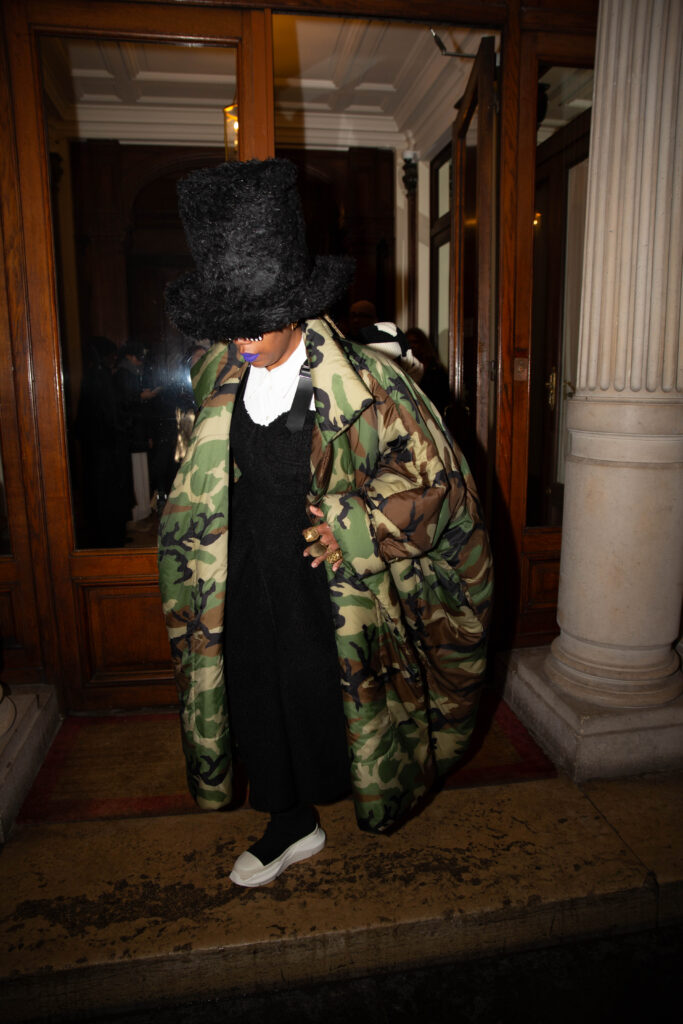
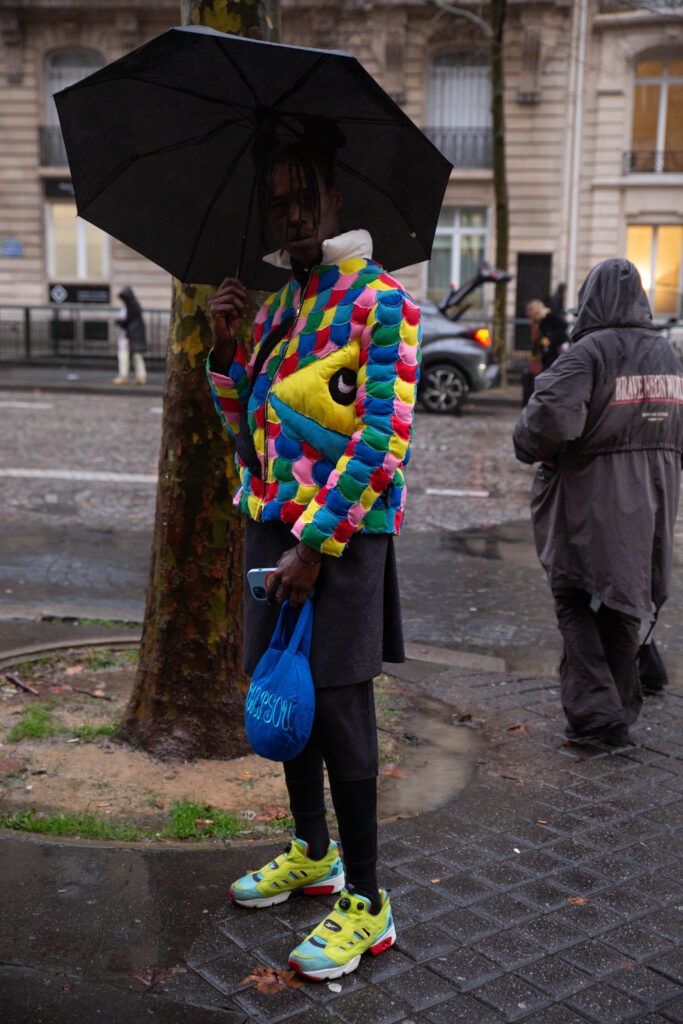
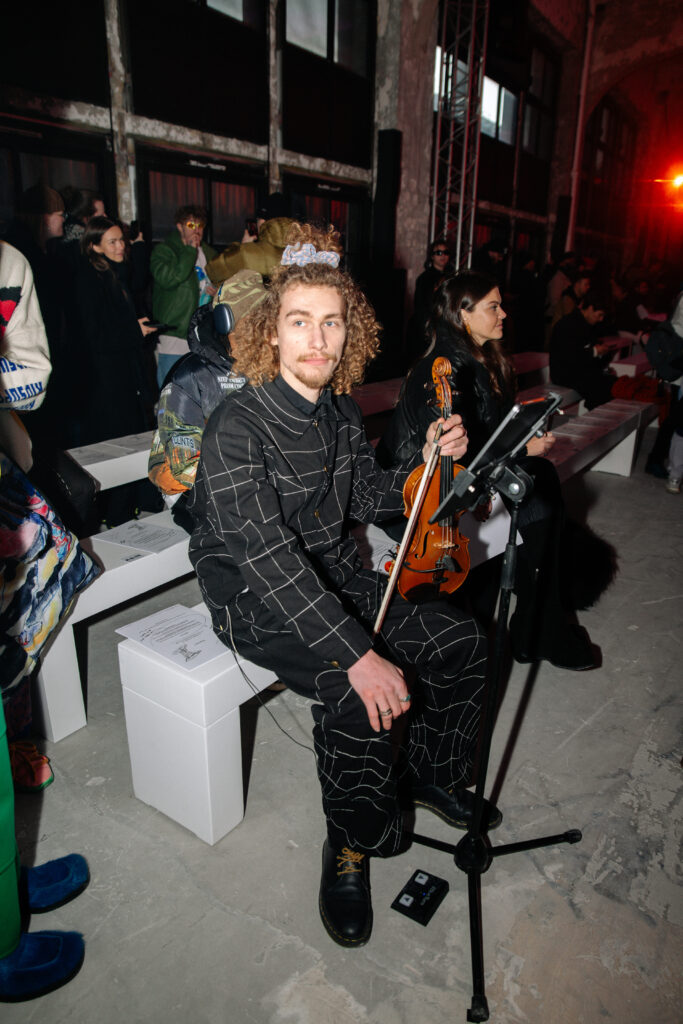
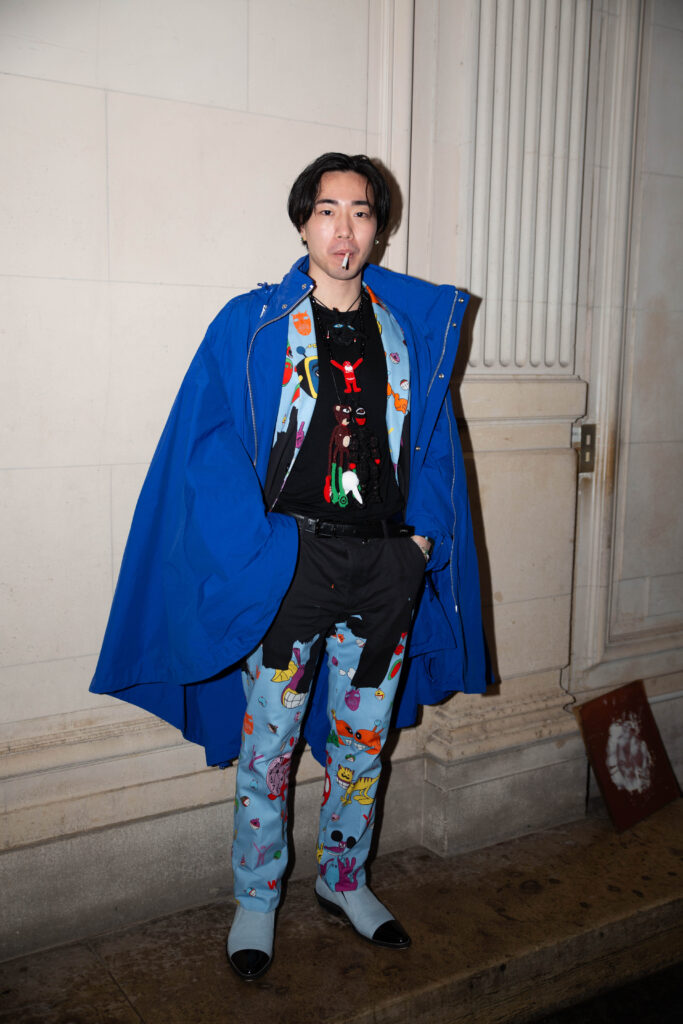
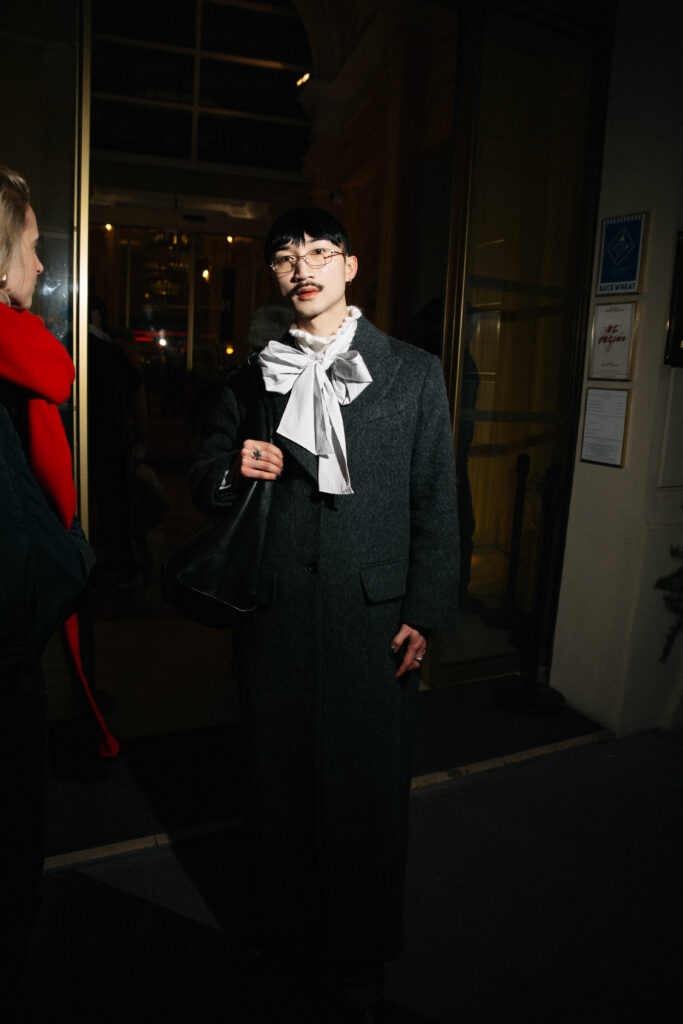
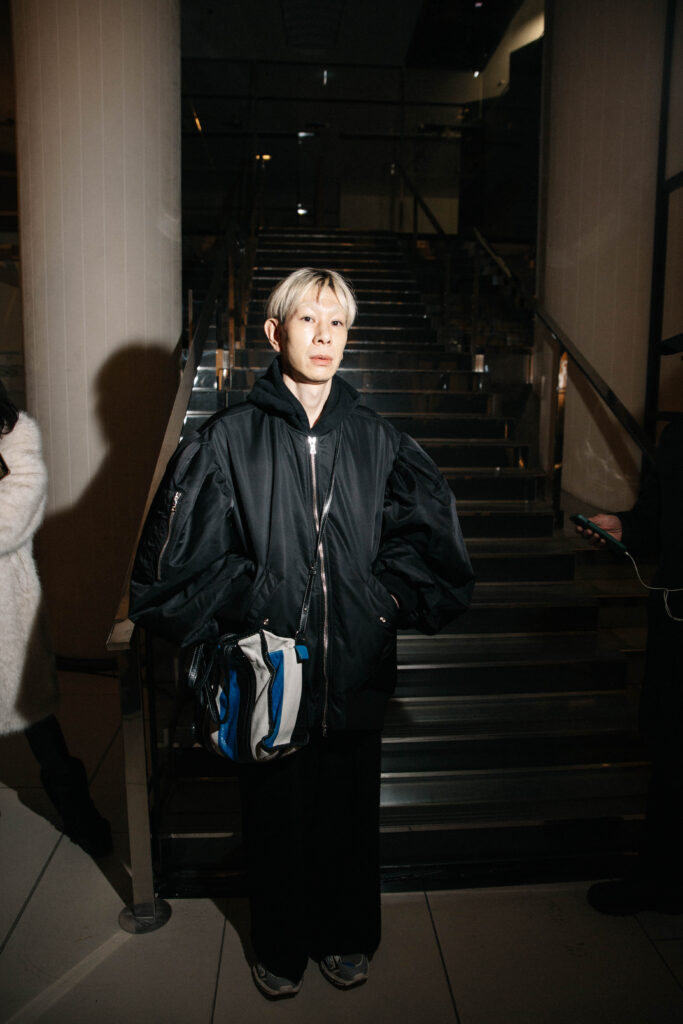
Paris Fashion Week Menswear F/W 24-25, Streetstyle. Images by Vera Pakhai.
In the presence of Paris Menswear Fashion Week, it felt like a walking museum where you can look but not touch. Or you can at least ask for Instagram and walk away the next second. There’s a sense of theatrics in the fashion streets. Additionally, the general synergy in Paris during Fashion Week becomes a spectacle.
The act of phones out, covering the vision only seen through the phone, and not the eyes. The spectators of Fashion Week attend in the various approaches to phones. Many keep their phones at all times for the sole purpose of not missing out. It includes individuals with no phones in their presence. Fashion Week is a job, those with phones or no phones, they are all working.
Networking, talking with people standing in the same line with you or sitting next to you. Being interesting, with no interest. The presence of transactional exchange of Instagram usernames like business cards, or the communication about nothing more than the horrible weather it was in the duration of Menswear Fashion Week. The audience becomes self-interested, burying the etiquette of reading the show notes or articulating their observations and thoughts concerning the collection. Subsequently leads to the audience leaving before the designer comes out, leaving as fast as possible to the next show.
The presence of the audience attends with a purpose, but it becomes another when the audience does not share a common fundament of knowing about the artist designer nor clothes produced. Hall’s audience reception theory continues focusing on the idea that each piece of object has intended messages from its creator. These messages can be interpreted in three hypothetical ways by the receiving audience. The preferred task is when the consumer fully understands the intended message. Negotiated task of when the consumer understands the message but adapts it to suit their values. The oppositional task is when the consumer disagrees with the intended meaning.
In fashion, ideally, there is an acknowledgement that consumers interpret and interact with fashion items in diverse ways. It provides insights into how fashion messages are received, adapted, or resisted by different segments of the audience.
As culture evolves, so does the relationship between creatives and their audiences. Reflecting on a continual dialogue between creator and interpreter. Navigating the nuances of the audience interaction becomes prominent in translating the true impact and significance of artistic expression.
